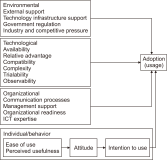JOURNAL OF INFORMATION SCIENCE THEORY AND PRACTICE
- P-ISSN2287-9099
- E-ISSN2287-4577
- SCOPUS, KCI
11권 2호
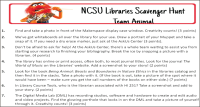
초록
Abstract
Libraries are still conservative in their approach or practice of providing various services for the unspecified majority of visitors attending these institutions. It is very apparent that libraries are not actively trying to increase the interest and participation of users by applying the various angles or elements associated with gamification. By its very nature, gamification is the application of game-playing elements such as point scoring, peer competition, team work, score tables, and such used to motivate participants and make them more engaged with the subject matter. In areas such as education, marketing, and exercise, the implementation of gamification techniques is actively taking place in order to maximum participation by taking advantage of uncertainties or the competitive nature that many people have with the setting of goals. In this study, four libraries that have applied gamification are analyzed to understand how and to what degree gamification has been applied. Broken down into four different elements, this includes: Point, Reward, Leaderboards & Competition, Self-expression & Achievement. By focusing on the results of this analysis, gamification measures that can be applied to other libraries are specifically proposed. The overall results of this study will provide useful guidance and potential plans for libraries seeking to increase the number of users by using gamification to increase user participation and/or satisfaction with additional library services.




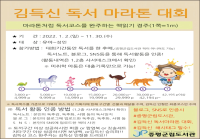



초록
Abstract
This study aims to develop ontologies regarding cultural knowledge of Thai-Khmer textiles by applying the Knowledge Engineering Methodology to build upon the ontologies. The process includes 1) generating the ontologies’ objectives, 2) building ontologies, and 3) evaluating the ontologies. The researchers used OntOlogies Pitfall Scanner (OOPS!) to minimize defects and asked two experts to evaluate the ontologies’ design. Protégé was used to design the ontologies, and WIDOCO was used to present the ontologies through the World Wide Web. It was found that the developed ontology consists of two classes, 16 sub-classes, and 16 relationships. The ontologies assessment found that there were seven items to fix according to the OOPS! software. Apart from the assessment program, the experts mentioned that all five aspects were suitable; namely, the ontology design was evaluated at 4.51 (Likert), the process of identifying scopes of definitions and objectives of development was 4.61, the applications and guidelines for further development was 4.58, the process of forming classes was 4.53, and the process of generating class’s properties was 4.50.




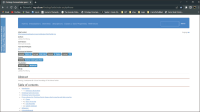
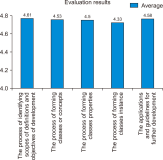
초록
Abstract
This study assesses the growth and distribution of research journals indexed in Scopus from 2000 through 2019, using SCImago data for journal and country ranking. A total of 15,484 journals were indexed in Scopus up till 1999, and from 2000 to 2019, 11,037 journals were indexed in Scopus at an average of 581.85 journals per year at an average annual corresponding growth of 2.74%. Of the total journals indexed in Scopus, 41.61% were indexed during the last two decades. Europe is the leading continent publishing nearly 60% of the total world journals, while Africa publishes around 1% of journals, the lowest among all the continents. The United Kingdom, United States (US), China, Brazil, Australia, and Egypt are the leading countries publishing the maximum number of journals from their respective continents. Of the total journals indexed across the world, nearly one-fourth (6,425, 24.23%) are published in the US. Still more, of the 109 journal publishing countries across the world, nearly 90% of journals are published in twenty leading journal publishing countries. Among the 27 major Scopus recognized subject disciplines, the majority (1,606, 6.06%) of journals are published in the field of medicine. The growth of research journals and the growth of research results has moved at a uniform pace, and any asymmetry between the two is bound to result either in the introduction of predatory and dubious journals or in the production of sub-standard research results.
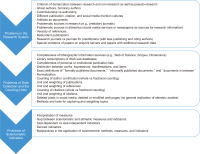
초록
Abstract
Scientometrics and research evaluation describe and analyze research publications when conducting publication, citation, and topic analyses. However, what exactly is a (scientific, academic, scholarly or research) publication? This article demonstrates that there are many problems when it comes to looking in detail at quantitative publication analyses, citation analyses, altmetric analyses, and topic analyses. When is a document a publication and when is it not? We discuss authorship and contribution, formally and informally published documents, as well as documents in between (preprints, research data) and the characteristics of references, citations, and topics. What is a research publication? Is there a commonly accepted criterion for distinguishing between research and non-research? How complete and unbiased are data sources for research publications and sources for altmetrics? What is one research publication? What is the unit of a publication that causes us to count it as “1?” In this regard, we report problems related to multi-author publications and their counting, weighted document types, the unit and weighting of citations and references, the unit of topics, and counting problems—not only at the article and individual researcher level (micro-level), but also at the meso-level (e.g., institutions) and macro-level (e.g., countries). Our results suggest that scientometric counting units are not reliable and clear. Many scientometric and research evaluation studies must therefore be used with the utmost caution.


초록
Abstract
This paper presents a dynamic development of an ontology-based statistical information system supporting the collection, storage, processing, analysis, and the presentation of statistical knowledge at the national scale. To accomplish this, we propose a data mining technique to dynamically collect data relating to citizens from publicly available data sources; the collected data will then be structured, classified, categorized, and integrated into an ontology. Moreover, an intelligent platform is proposed in order to generate quantitative and qualitative statistical information based on the knowledge stored in the ontology. The main aims of our proposed system are to digitize administrative tasks and to provide reliable statistical information to governmental, economic, and social actors. The authorities will use the ontology-based statistical information system for strategic decision-making as it easily collects, produces, analyzes, and provides both quantitative and qualitative knowledge that will help to improve the administration and management of national political, social, and economic life.

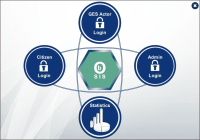


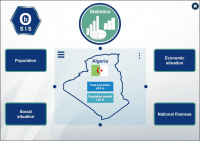
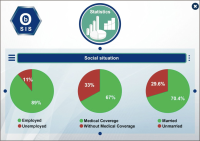
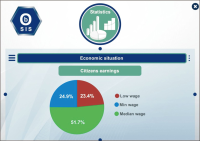

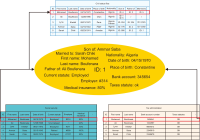



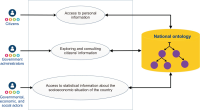


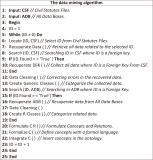











초록
Abstract
The Zimbabwean healthcare sector faces huge challenges due to increased demands for improved services for a growing number of patients with fewer resources. The use of information and communications technologies, prevalent in many industries, but lacking in Zimbabwean healthcare, could increase productivity and innovation. The adoption of health management information systems (HMISs) can lead to improved patient safety and high-level patient care. These technologies can change delivery methods to be more patient focused by utilising integrated models and allowing for a continuum of care across healthcare providers. However, implementation of these technologies in the health care sector remains low. The purpose of this study is to demonstrate the advantages to be attained by using HMISs in healthcare delivery and to ascertain the factors that influence the uptake of such systems in the public healthcare sector. A conceptual model, extending the technology, organization, and environment framework by means of other adoption models, underpins the study of adoption behavior. A mixed method methodology was used to conduct the study. For the quantitative approach, questionnaires were used to allow for regression analysis. For the qualitative approach, thematic analysis was used to analyse interview data. The results showed that the critical success factors (namely, relative advantage, availability, complexity, compatibility, trialability, observability, management support, information and communication technology expertise, communication processes, government regulation, infrastructure support, organizational readiness, industry and competitive support, external support, perceived ease of use, perceived usefulness, attitude, and intention to use) influenced adoption of HMISs in public hospitals in Zimbabwe.



